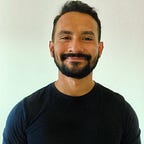The City in Which I Code You
It was a queer, sultry spring, the spring they declared COVID-19 a pandemic, and I didn’t know what I was doing in Houston, Texas.
I first visited the H-Town on the summer of 2015, during a road trip my brother and I did across the Southern States. A friend lived in town, so we stopped by for a couple of days to meet. I liked it, downtown was fairly big and pretty, Galveston was romantic and not too far, and gas and rent were cheaper than in Miami, where I had lived since coming to the US. So on 2016, when a film internship with MECA became available, I gave it a shot and moved. My plan was to finish my internship to then go to Austin, TX, afterwards Los Angeles, and at some point New York City.
I never imagined I would stay in Houston for the next four years and that, out of pure serendipity, I would built quite a beautiful life of my own in the city of NASA and Beyonce. But I did: the internship led to a full time job and I met a cute guy who I ended up marrying. We moved to our first apartment in 2018, before long we bought our first house. I forgot about the promise of thrills in the East coast and the glamour of the West coast. I was too busy attending affordable college classes at HCC towards my B.S, working (non-stop) a well paid job in the field I had just earned my A.S on, going to Hamburger Mary’s, discovering new Mexican restaurants, walking around Herman Park and Memorial Park, and most importantly, saving money.
And then, along came COVID-19. My spouse and I saw the news of the first cases in Wuhan, China on January 2020 and by March, I was out of a job, locked in my house. Only then I began to question my love for Houston. One day, as I stepped outside my porch and saw nothing but an endless stream of suburban houses and a highway of 26 lanes, I couldn’t help but wonder if I alone felt out of place in my own town, as if COVID-19 had happened only to me, as though life was happening somewhere else, anywhere else, other than here.
Despite my feelings, COVID-19 has indeed happened to the entire world, not just me. One of the places that seems to be particularly disrupted is Silicon Valley. Amid antitrust pressure from Congress, rising cost of rent/mortgage in the Bay Area, and California’s high taxes, Silicon Valley is now facing the challenge of closing it’s ridiculously cool offices/campuses, forgetting about in-person networking and sending everybody to work form home until further notice, with some companies saying there may never be a notice at all, thus making remote work permanent.
Remote working is nothing new to the tech industry. In 2009 IBM reported that 40 percent of IBM’s some 386,000 employees in 173 countries had no office at all. But this experiment ended in 2017, when they cancelled all type of remote working for all employees. These kind of experiments have been done previous to COVID-19, with successful results mainly for small startups.
This time, however, the jump to remote working has been given by the big players of the industry:
- Jack Dorsey’s Twitter and Square have both said employees can work from home “forever”.
- Mark Zuckerberg has said as many as 50% of Facebook employees could be working remotely within the next five to 10 years.
- Google announced employees can work form home until July 2021.
I can’t help but trying to predict the future during these COVID-scarred times, in which nothing is predictable and not one day is taken for granted. The effort seems more ridiculous because I’m trying to predict the tech industry, an industry that has proudly coined the word “disruptive”. Perhaps what I’m doing is more wishful thinking than anything else. I return once again to Li-Young Lee, the poet who’s poem inspired this blogs title, which ends like this:
“And I never believed that the multitude
of dreams and many words were vain”.
